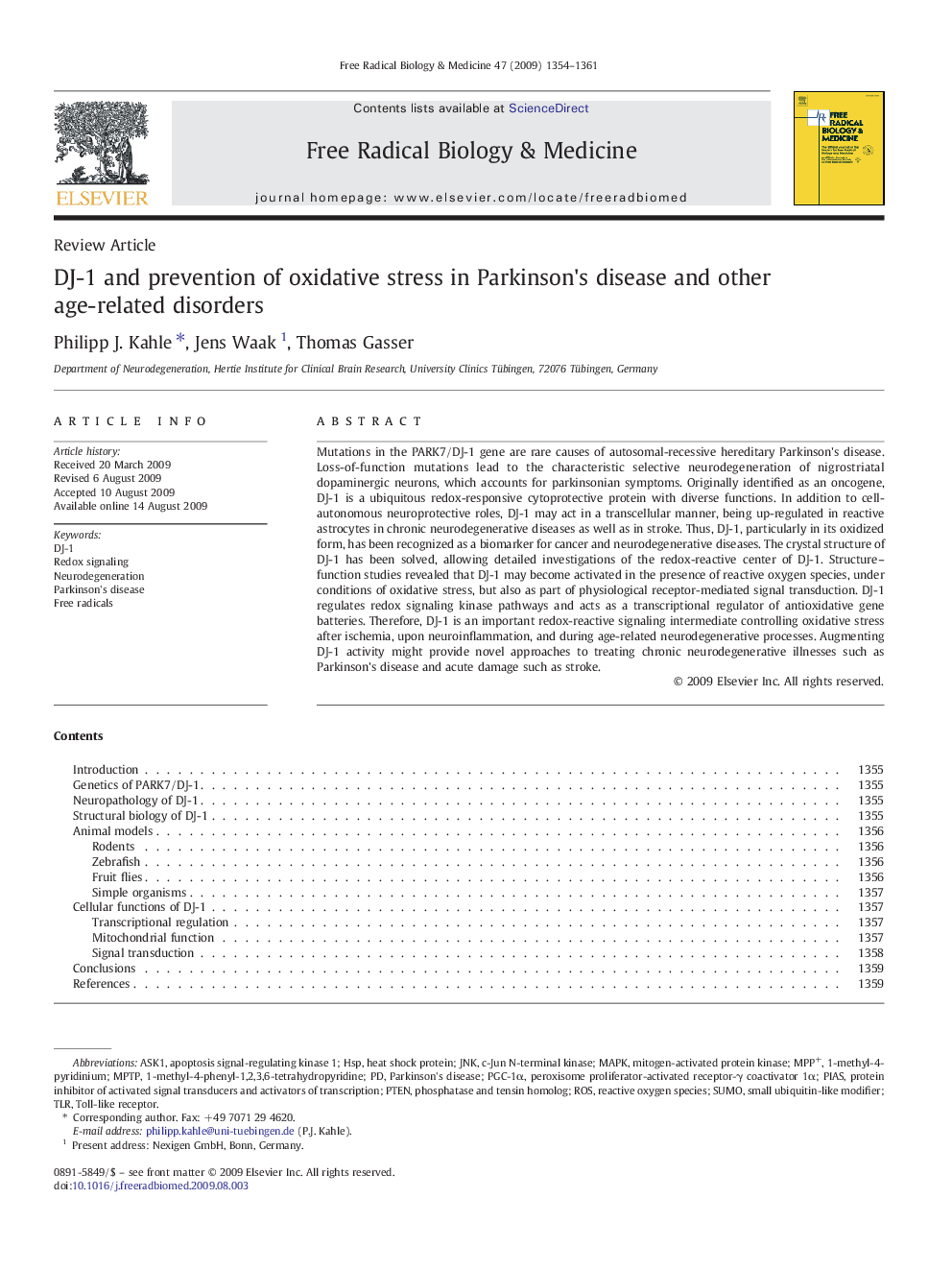| Article ID | Journal | Published Year | Pages | File Type |
|---|---|---|---|---|
| 1909722 | Free Radical Biology and Medicine | 2009 | 8 Pages |
Mutations in the PARK7/DJ-1 gene are rare causes of autosomal-recessive hereditary Parkinson's disease. Loss-of-function mutations lead to the characteristic selective neurodegeneration of nigrostriatal dopaminergic neurons, which accounts for parkinsonian symptoms. Originally identified as an oncogene, DJ-1 is a ubiquitous redox-responsive cytoprotective protein with diverse functions. In addition to cell-autonomous neuroprotective roles, DJ-1 may act in a transcellular manner, being up-regulated in reactive astrocytes in chronic neurodegenerative diseases as well as in stroke. Thus, DJ-1, particularly in its oxidized form, has been recognized as a biomarker for cancer and neurodegenerative diseases. The crystal structure of DJ-1 has been solved, allowing detailed investigations of the redox-reactive center of DJ-1. Structure–function studies revealed that DJ-1 may become activated in the presence of reactive oxygen species, under conditions of oxidative stress, but also as part of physiological receptor-mediated signal transduction. DJ-1 regulates redox signaling kinase pathways and acts as a transcriptional regulator of antioxidative gene batteries. Therefore, DJ-1 is an important redox-reactive signaling intermediate controlling oxidative stress after ischemia, upon neuroinflammation, and during age-related neurodegenerative processes. Augmenting DJ-1 activity might provide novel approaches to treating chronic neurodegenerative illnesses such as Parkinson's disease and acute damage such as stroke.
